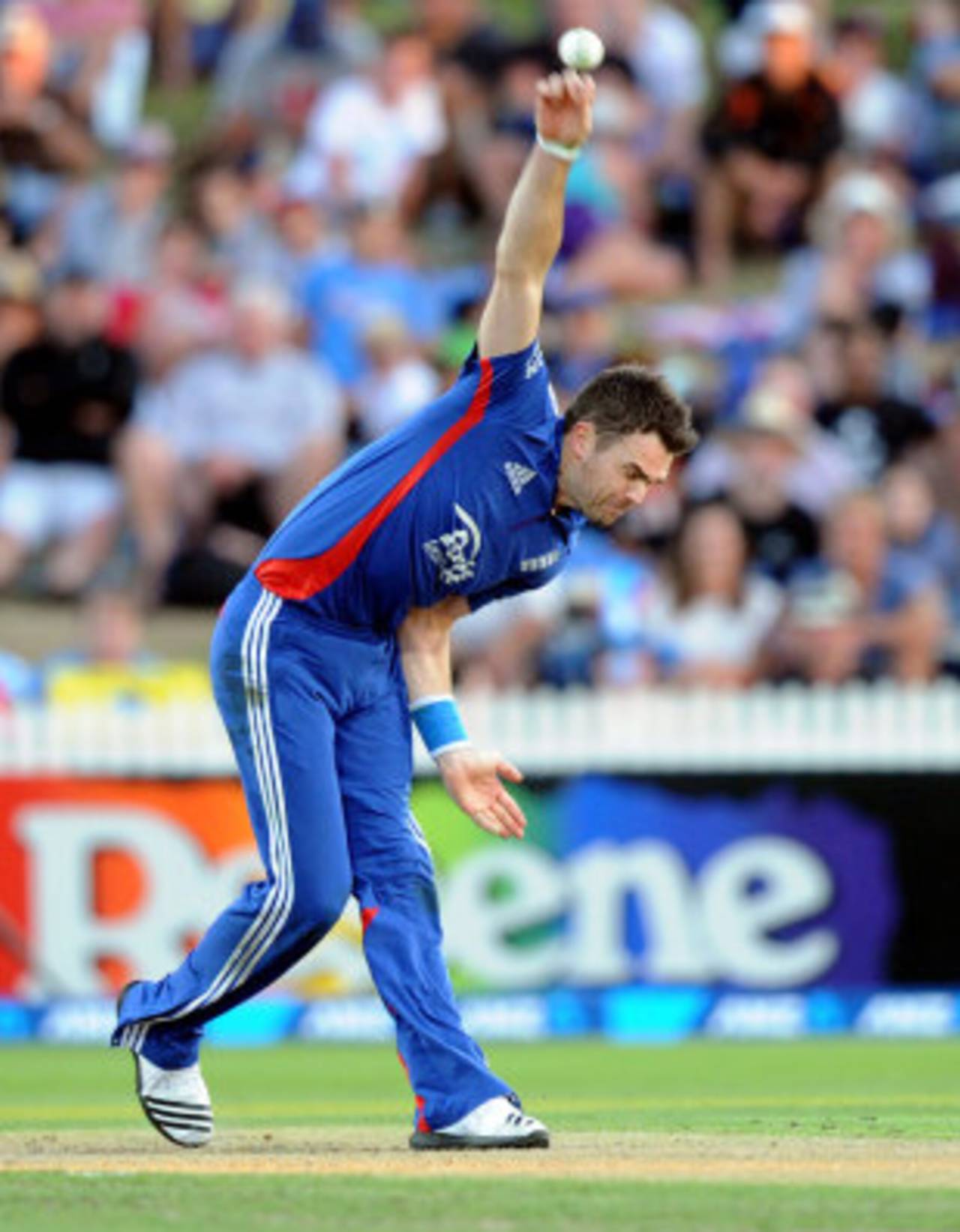When
James Anderson last played in New Zealand during the 2008 tour any talk of him becoming a record-breaking England bowler would have sounded extremely far-fetched. After a sparkling start to his international career in 2003 injury, lack of form and some misguided attempts to change his action had repeatedly interrupted his career.
His Test match average stood at
its highest point - 39.20 - and he had just come off the back of a one-day series against New Zealand where his four wickets cost 67.50 with an economy rate of over seven an over. Then, in Wellington, Matthew Hoggard's Test career was ended with his omission and Anderson took his place.
Five years later and he is part of a constant debate of where he sits among the world's leading pace bowlers. The consensus is that Dale Steyn pips him - and watching Steyn on recent form does not leave much room for debate - but to be vying for second spot behind him is certainly a notable place to sit.
On Sunday, in Hamilton, with his sixth ball in competitive cricket since the Test series against India before Christmas, Anderson became England's
leading international wicket-taker when he bowled BJ Watling with a wonderful inswinger - a worthy delivery to claim a record. It is a slightly contrived landmark, adding together all three formats, none the less one that highlights Anderson's rise to one of England's finest bowlers even if globally he remains
some way down the list.
"It's a huge honour," Anderson said. "Overtaking someone like Ian Botham is a massive achievement for me, and I'm very proud of it. It is hard to believe, and I also still can't believe I've been playing for 10 years.
"It's still all a bit of a dream come true, and I'm delighted to be still here playing - and I hope I can keep taking wickets for years to come."
Anderson's wickets have been more evenly spread than Botham's between the two traditional formats - currently 288 in Tests and 223 in ODIs, with Twenty20 chipping in 18 - a sign of the volume of one-day cricket played during Anderson's career and that his Test career went through that reasonably prolonged dip from 2004-2007.
Anderson has Botham's English Test record of 383 wickets in his sights. He needs another 96 to overtake the mark. There is a strong chance of him claiming the 12 he requires for 300 during the forthcoming series against New Zealand. If he averages four wickets per Test (marginally higher than his current ratio of 3.74, although that has risen to 3.96 since his recall in 2008) during the 22 matches scheduled from now until August 2014 he will be very close.
"If I stay fit for long enough and play for long enough, I think I can," was Anderson's simple response. "I hope then the wickets will just tot up and I can look back at them fondly at the end of my career."
Of more immediate importance for Anderson is leading the attack in the remaining two one-day internationals and shaking off his winter rust ahead of the Test matches. It was a testament to Anderson's skill that his first over in Hamilton, which brought the wicket of Watling, was of such high quality after a two-month lay-off and no warm-up matches.
But his lack of recent bowling did show towards the end of the match as he dropped too short in his ninth over and Brendon McCullum latched onto him and carried his team to victory.
"Obviously there are things we need to work on," he admitted. "I thought we bowled well up front but were then probably a little bit rusty when it came down to the later overs. So that's something we're trying to brush up on. It's tricky not having that match practice before a series. But we have to cope with that these days."
Anderson's break during the India one-day series was part of the rotation system England are now using in an attempt to keep key players fresh ahead of a hectic 2013 and beyond. So far, unlike Australia, England's management have largely kept rotation as part of the limited-overs formats although have used it occasionally in Tests.
Anderson missed the 2010 tour of Bangladesh (along with Andrew Strauss) then Stuart Broad was given downtime for the return visit later that year with both decisions taken with a view to the 2010-11 Ashes. It worked for Anderson, who claimed 24 wickets down under, but less so for Broad who has battled frequent injuries over the last two years. Anderson and Broad were also pulled out of the final Test against West Indies, at Edgbaston, last year after England had wrapped up the series.
With five matches across two series against New Zealand, followed by the Champions Trophy and back-to-back Ashes it is possible that someone, most likely one of the fast bowlers, could be rested again during the home visit of New Zealand.
"I think it's one way to prolong your career," Anderson said. "The rotation system has worked pretty well so far; the players have been pretty happy with it. Obviously you want to play as much cricket as you can, because you're not going to play forever. But the management, who make these decisions, have got our best interests at heart."
But with records in sight, and Anderson in the prime of his career, his phlegmatic attitude towards watching others claim wickets for England, particularly with the red ball, will be tested.
Andrew McGlashan is an assistant editor at ESPNcricinfo
